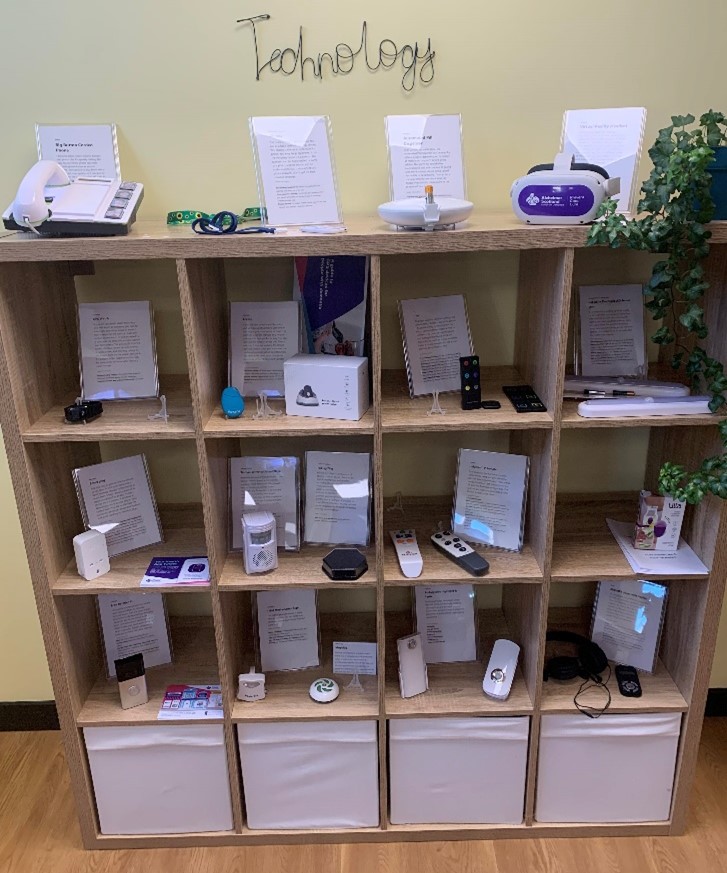
Hello! My name is Eva O’Callaghan and I’m an MSc in Occupational Therapy student at Edinburgh Napier University. I completed an eight-week placement between NHS Fife and Alzheimer Scotland at the end of last year, where I spent two days of each week at the Alzheimer Scotland Brain Health and Dementia Resource Centre in Kirkcaldy. I am keen to share my learning with you from my time with Alzheimer Scotland as it relates to the Person Environment Occupation Model of Occupational Therapy (Law, 1996).
Person
- Dementia is not part of the normal aging process. It is a neurocognitive disorder, meaning it affects the brain in how a person remembers and thinks.
- Most people diagnosed with dementia are over the age of 65. However, some people can be in their 50s or early 60’s when they receive a diagnosis.
- Women tend to be more likely to develop dementia than men.
- Some conditions may increase a person’s risk of developing dementia, such as Down Syndrome, some Cardiovascular Conditions, Traumatic Brain Injury, some Mental Illnesses, and some Sleep Disorders.
- A person’s lifestyle choices such as smoking, excessive alcohol consumption, a sedentary lifestyle or poor diet may also increase their risk of developing dementia.
- Dementia will present differently from person to person. A person with dementia may present with Memory loss, Disorientation and/or Confusion, Personality and/or Behavior Changes, Impaired Judgement/Decision-Making and Initiative, Mood Swings, Language/Communication Problems…
- The person living with dementia is not defined by their diagnosis. Each person living with or who has lived with dementia possesses distinctive qualities. That is, their own personality, skills, interests, and beliefs, amongst others.
Environment
- The physical environment at the Alzheimer Scotland Brain Health and Dementia Resource Centre in Kirkcaldy follows the Alzheimer Scotland’s Environmental Audit Tool.
- Alzheimer Scotland works in conjunction with the Health and Social Care Standards ‘My Support My Life’. The Resource Centre visibly demonstrates their meeting of these standards through the framing of specific standards and placing of them next to relevant features of the space.
- Technology also plays an important role in creating a dementia-friendly environment at the Resource Centre (See Image). I had the opportunity to attend a training session for the use of Virtual Reality Headsets in Dementia Care during my placement.
- The social environment of the Resource Centre incorporates service users, and sometimes their loved ones, staff and volunteers.
- Other environmental factors for consideration include cultural and socioeconomic. For example, what kind of funding is available in Fife for these resources, and what impact could this have on the physical environment available to service users? Or, what are the cultural beliefs in the surrounding areas regarding Dementia, and how could this affect Dementia Care?
Occupation
- In Occupational Therapy, occupations refer to anything a person does to occupy themselves. Occupations can be categorised into self-care, productivity and/or leisure.
- Someone living with Dementia may experience difficulties with, what we call in healthcare, ‘Activities of Daily Living’ or ‘ADLs’. These include mobilising, transferring, toileting, bathing, dressing, managing medication(s), preparing food and drink, feeding and drinking, shopping, and so on.
- Occupational Therapists work to enable people with a variety of difficulties to participate in their necessary ADLs and in occupations that are meaningful to them.
- During my time at Alzheimer Scotland, I attended a number of groups centred around meaningful occupation – a snooker club, a baking group, social groups, a seated exercise group, and daycare – which was made up of meaningful activities. Toward the end of my placement, I had the opportunity to lead a group activity focused on reminiscence during daycare.
Overall, this was a highly valuable placement for a Pre-Reg. Occupational Therapy student. I am now far more comfortable talking about dementia and going on to provide care and support for those living with dementia and their loved ones.
Contributor: Eva O’Callaghan, MSc Occupational Therapy (Pre-Reg.) student, Edinburgh Napier University.
Reference: Law, M., Cooper, B., Strong, S., Stewart, D., Rigby, P., Letts, L. (1996). The Person-Environment-Occupation Model: A transactive approach to occupational performance. Canadian Journal of Occupational Therapy, 63 (1).
